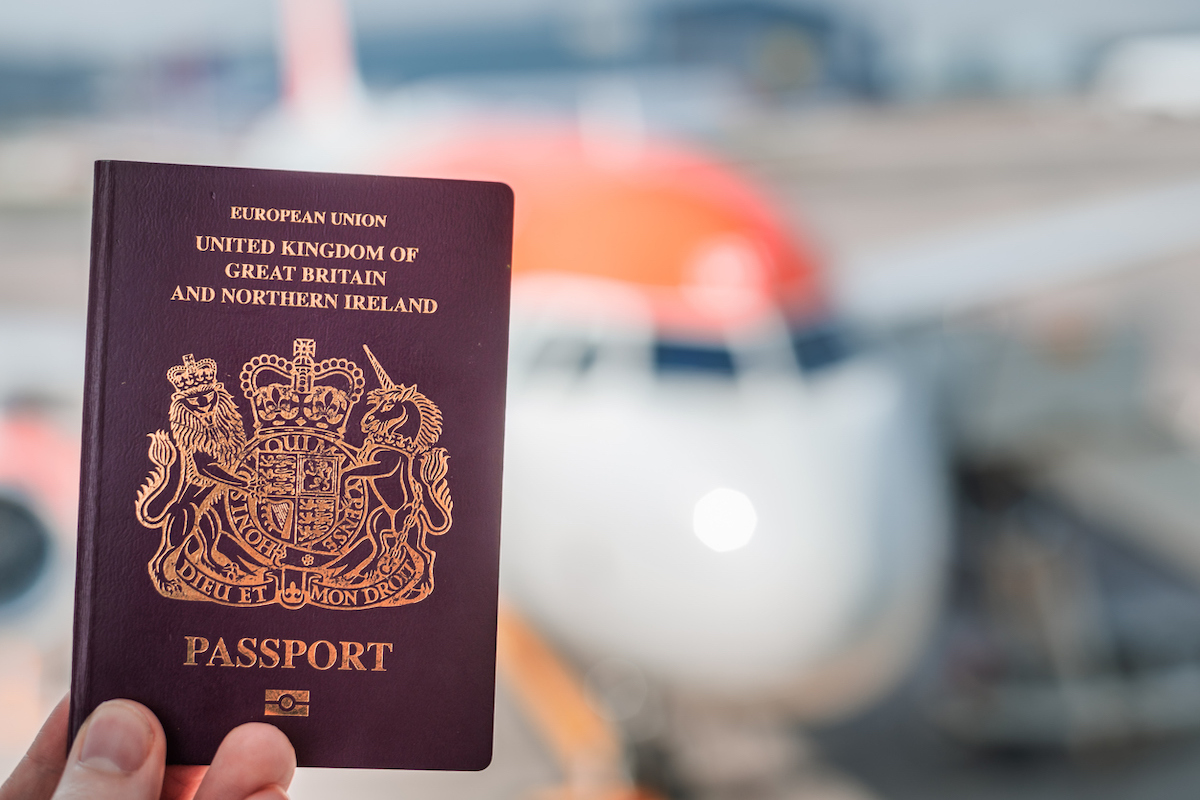Read the original article on Best Life. On May 10, the U.S. State Department announced it had eased travel restrictions for the U.K. as well as Israel, Reuters reports. Since mid-March 2020, the U.S. has banned nearly all non-U.S. citizens who have recently visited the U.K. In April, both Britain and Israel were raised to the State Department’s highest warning level—“Level 4: Do Not Travel”—as their situations with the virus took a turn for the worse. Now, the U.K. is down to a “Level 3: Reconsider Travel” rating and Israel is down to “Level 2: Exercise Increased Caution.” Israel had been brought down to a Level 3 a few weeks earlier; this is its second reduction.ae0fcc31ae342fd3a1346ebb1f342fcb According to the Centers for Disease Control and Prevention’s (CDC) travel risk level breakdown, Level 4 indicates “travelers should avoid all travel”; Level 3 means “travelers should avoid all nonessential travel”; Level 2 says “travelers at increased risk for severe illness from COVID-19 should avoid all nonessential travel”; and once a country is at Level 1, that means the risk is low, but all travelers should still practice the basics—“wear a mask, stay at least 6 feet/2 meters from people who are not from your travel group, avoid crowds, wash their hands often or use hand sanitizer, and watch their health for signs of illness.” And for regular updates on COVID and more, sign up for our daily newsletter. In early May, a coalition of U.S. and European travel officials and private airline companies wrote a letter to U.S. President Joe Biden and British Prime Minister Boris Johnson pushing for a full reopening of U.S.-UK air travel “as soon as safely possible,” according to Reuters. “The return of transatlantic flying would not only have a significantly positive impact on our respective economies but will also reunite those who have been separated from their loved ones for over a year,” read the letter, which was signed by the U.S. Chamber of Commerce along with airline coalitions and companies in the U.S. and U.K. “Safely reopening borders between the U.S. and U.K. is essential for both countries’ economic recovery from COVID-19.” The State Department added these risk-level travel warnings in April to align with the CDC. At the time, they said in a statement, “As always, we are closely monitoring conditions around the globe, and will regularly update our destination-specific advice to U.S. travelers as conditions evolve.” But many experts question why they’re still in place for countries like the U.K. “These travel restrictions could serve a purpose, but we need to be clear about what that purpose is right now,” Scott Gottlieb, MD, former U.S. Food and Drug Administration (FDA) commissioner, said on Face the Nation on May 2. “We still have restrictions in place against travel from China and the U.K. That doesn’t make a lot of sense. So I’m not really sure what the overall strategy is around these continued travel restrictions that we have in place.” (China remains at Level 3 at the moment.) RELATED: The CDC Has Changed One of Its Most Controversial COVID Guidelines. The U.K. allows people from the U.S. to visit as long as they complete a 10-day quarantine upon arrival and receive two negative COVID tests on Day 2 and Day 8 of their quarantine. On May 7, the U.K. said it would allow some international travel to resume on May 17, but nearly all countries, including the United States, were left off its “green list,” which allows visitors from that state to travel quarantine-free, according to The Points Guy. In April, as COVID began surging in certain parts of the world, the State Department boosted about 120 countries up to “Level 4: Do Not Travel.” About 75 percent of the destinations (150 of 209) assigned a risk level by the State Department are at Level 4 at the moment, Reuters reports. One of the most recent additions was India, which has been struggling with arguably the world’s worst active coronavirus outbreak as of late. On May 4, the White House began banning most travel from India to the United States based on guidance issued by the CDC. The new travel restrictions bar any non-U.S. citizens who have visited India within the past 14 days from entering the U.S. The ban does not, however, apply to U.S. citizens or permanent residents, nor their spouses, young children, or siblings, or the parents of any citizen or permanent resident who is under the age of 21. Even those exempt from the India travel ban are still subject to the CDC guidelines for international arrivals to the U.S., which require a negative COVID test no more than three days prior your flight. Those who are not vaccinated must also self-quarantine for a full week after their return to the States. In regards to the travel ban for India, Gottlieb said, “If the goal is to try to prevent introduction of that new variant, 6.1.7. that’s circulating in India, I assure you it’s here already. So we’re not going to prevent its introduction.” RELATED: This Is How Close Your State Is to Being Fully Vaccinated, Data Shows.



